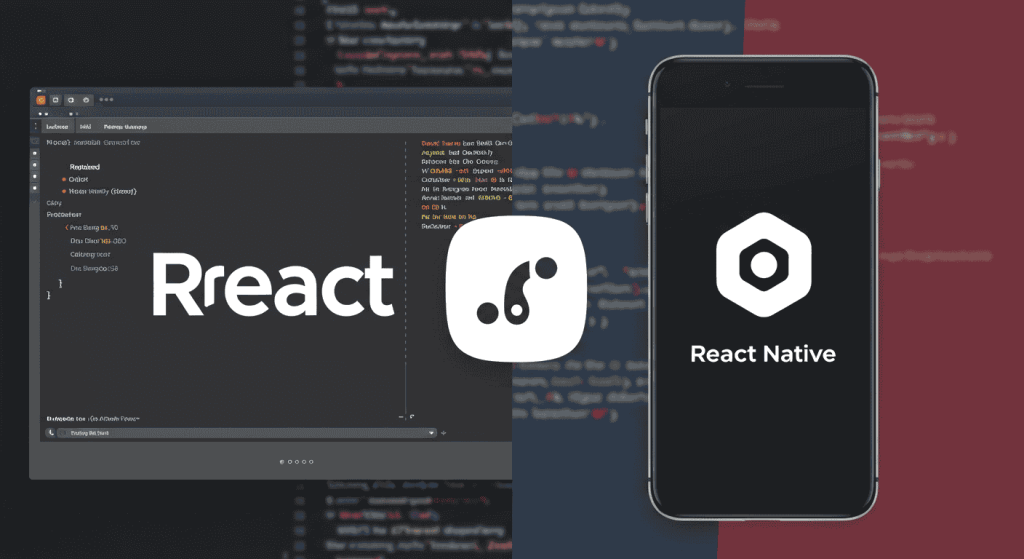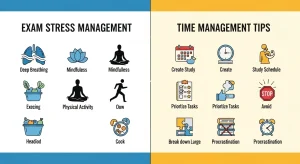🟩 React vs React Native: Which One Should You Learn in 2025?
As JavaScript continues to dominate the development world in 2025, two of its most popular technologies remain in high demand: React and React Native. Although they share a name and core principles, they serve two distinct purposes — one for web, the other for mobile.
If you’re starting your development journey or want to expand into mobile app creation, understanding the difference between React and React Native is essential. This blog post covers everything you need to know, including benefits, use-cases, similarities, and how to get started.
🟦 What is React?
React is a JavaScript library developed by Meta (Facebook) used to build fast and scalable web applications. It follows a component-based architecture, allowing developers to build reusable UI elements.
Key features:
-
Virtual DOM for better performance
-
JSX syntax
-
Component-based structure
-
Rich ecosystem (Redux, React Router, etc.)
-
Used for Single Page Applications (SPA)
🟦 What is React Native?
React Native is a framework that lets developers build mobile applications for Android and iOS using JavaScript and React concepts. Instead of rendering to the browser DOM, React Native components compile to native code.
Key features:
-
Native UI rendering
-
Cross-platform compatibility (Android + iOS)
-
Uses components like
<View>,<Text>,<TouchableOpacity> -
Access to device APIs (Camera, GPS, etc.)
-
Developed and maintained by Meta
🟨 Core Differences Between React and React Native
| Feature | React | React Native |
|---|---|---|
| Platform | Web (Browsers) | Mobile (Android & iOS) |
| UI Components | <div>, <h1>, <button> |
<View>, <Text>, <Button> |
| Styling | CSS / SCSS / Tailwind CSS | StyleSheet.create() (JS-based) |
| Routing | react-router-dom |
react-navigation |
| Rendering Target | HTML & DOM | Native components |
| Deployment | Web hosting (Vercel, Netlify) | App Store / Play Store |
| Build Tools | CRA, Vite, Webpack | Expo, Metro Bundler |
| Animation | CSS or Framer Motion | Animated API / Reanimated |
🟩 Similarities Between React and React Native
Despite their different platforms, React and React Native share about 70–80% similarities in terms of logic and structure.
✅ Common features include:
-
Component-based architecture
-
State and props handling
-
Lifecycle methods
-
Hooks (
useState,useEffect,useContext) -
Redux / Context API for state management
-
JavaScript language base
This is why many developers who learn React can quickly pick up React Native.
🟨 When Should You Use React?
Choose React if:
-
You’re building a website or web application
-
You want SEO optimization and browser compatibility
-
Your target users will use desktop or mobile browsers
-
You need rich libraries for forms, charts, etc.
Popular apps using React: Facebook, Netflix, Instagram (web), Airbnb.
🟨 When Should You Use React Native?
Choose React Native if:
-
You want to build mobile apps (Android + iOS)
-
You need access to device features (camera, location, sensors)
-
You want a single codebase for multiple platforms
-
You prefer JavaScript over native languages like Java or Swift
Popular apps built with React Native: Facebook, Instagram, Uber Eats, Discord (mobile), Pinterest.
Real Code Example: React vs React Native
<button onClick={() => alert(“Clicked!”)}>Click Me</button>
React Native Example:
<TouchableOpacity onPress={() => alert("Clicked!")}>
<Text>Click Me</Text>
</TouchableOpacity>Notice the logic is the same — only the UI components differ.
🧭 How to Learn React Native if You Know React
If you already know React, you’re 70–80% ready for React Native. Here’s a quick guide:
-
Learn mobile components (
View,Text,Image, etc.) -
Practice
StyleSheet.create()for styling -
Use Expo to build and test apps quickly
-
Learn React Navigation
-
Test on emulators or real devices (Android/iOS)
-
Use
react-native-device-info,react-native-camera, etc., for device access -
Publish to Play Store or App Store via Expo or EAS Build
❓ FAQ: React vs React Native
Q1: Is React Native harder than React?
Not really. If you know React, learning React Native is easier because the core logic and component structure are very similar.
Q2: Can I use CSS in React Native?
No, React Native doesn’t support CSS directly. Instead, you style using JavaScript via StyleSheet.create() or libraries like nativewind.
Q3: Do I need to learn Java or Swift to build mobile apps with React Native?
No, React Native uses JavaScript. But knowing native languages helps in complex integrations.











